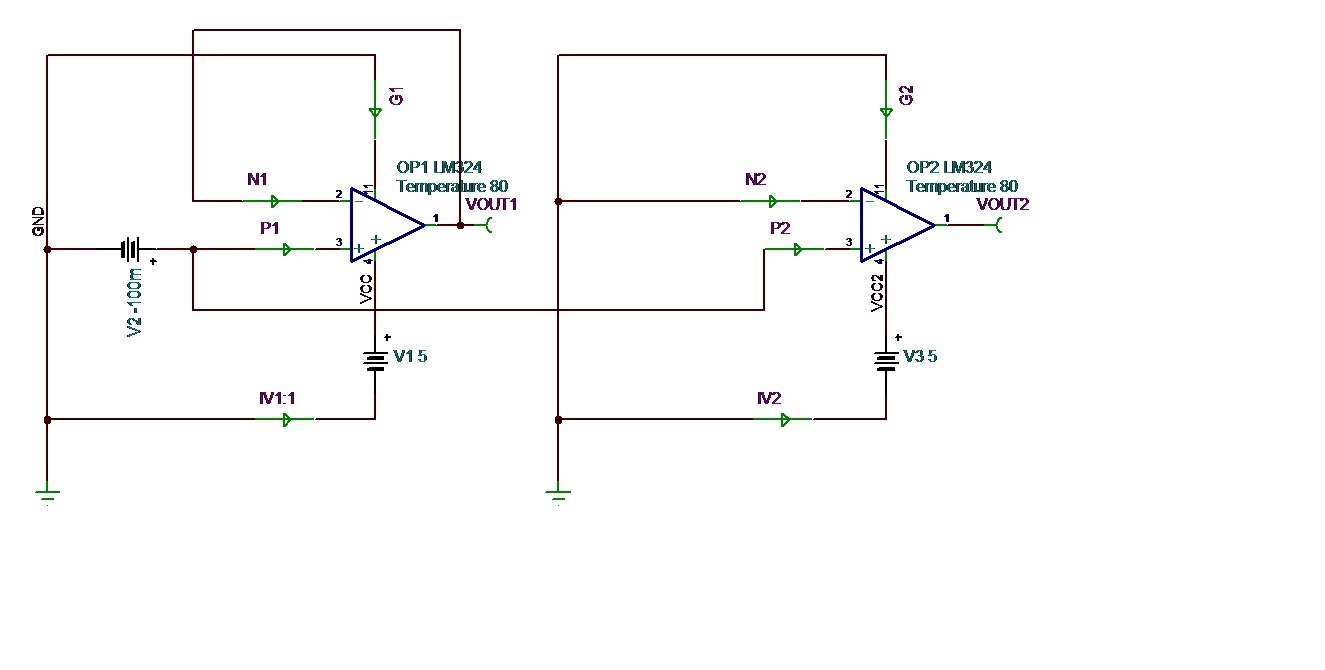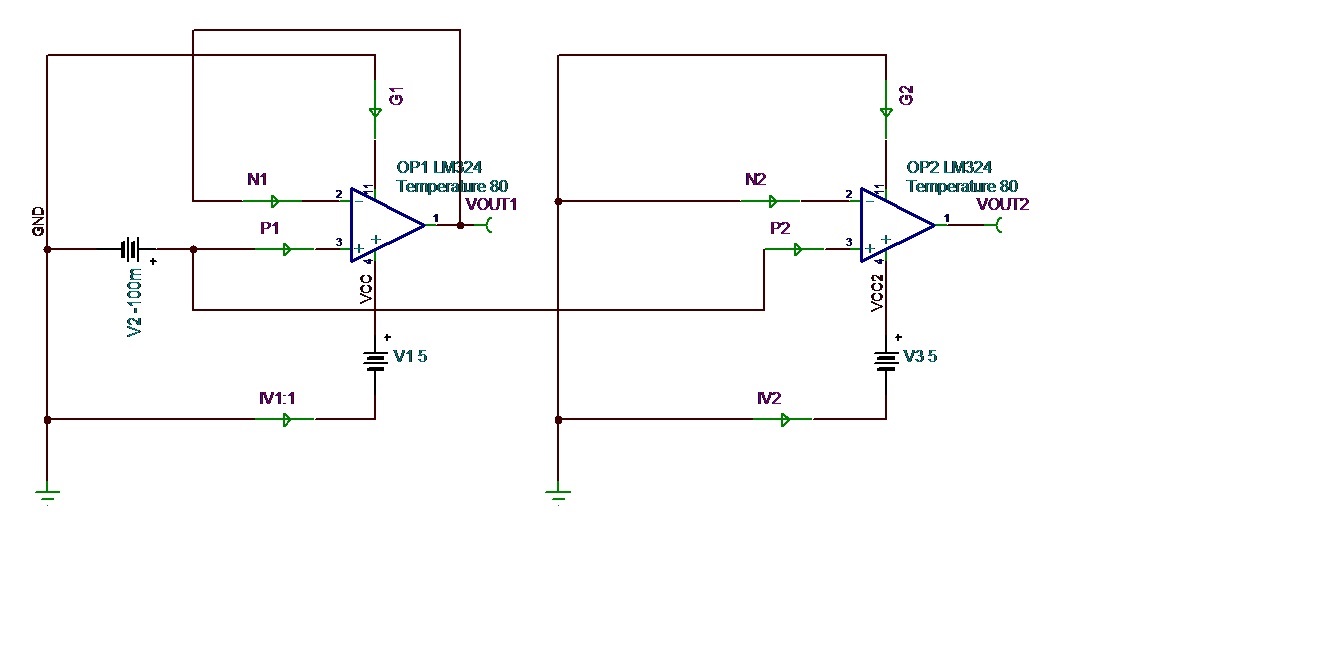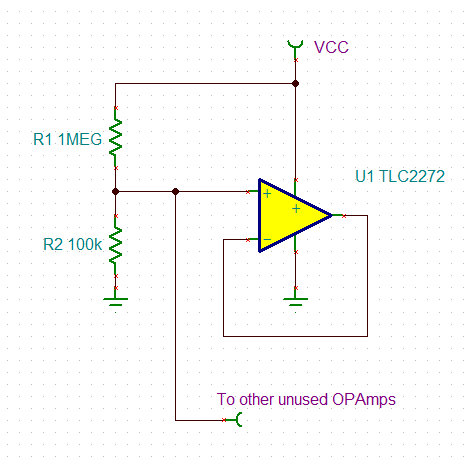Other Parts Discussed in Thread: TINA-TI, , LMC6484, LMC6482
Good day,
I came across an application note from TI regarding the termination of unused op-amps.
I ran the above through TINA-TI but, could not detect the issues highlighted in the article. As such, we built a laboratory prototype to test the issues highlighted in the Technical note and also did not find the problems indicated in the technical note.
The LM324 is a Rail-Rail input op amp, as such, driving its input to the 0V rail does not seem to give the amplifiers any problems. We also tried saturating the LM324, and the current increase was not particularly high. As it turns out, the second configuration (+/- input grounded) draws less current than the first configuration (unity gain voltage follower).
Please advise if it is ok for LM324 and LMC6484 to be operated with its inputs shorted as in the second configuration above.
Please also advise, for the first configuration (unity gain voltage follower), is it ok to drive the input to GND.
Thank you and have a good day,
Tai Wei




